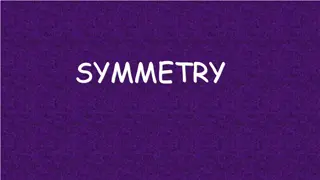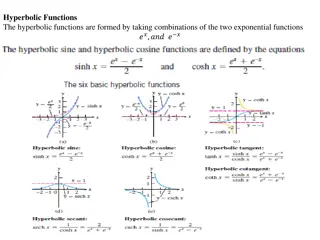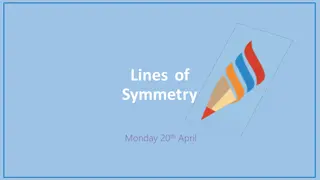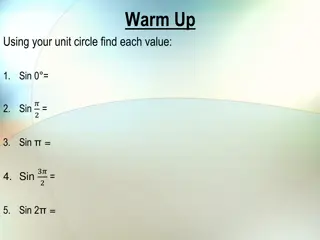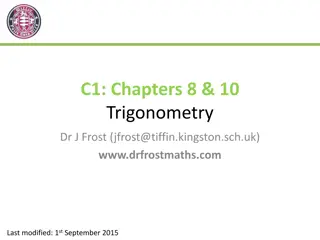Inverse Functions and Graph Symmetry
In mathematics, we explore inverse functions, determine if they are also a function, and analyze their domain and range. The graphs of inverse functions are symmetric to the line y=x. By switching x and y in a function before squaring both sides, we can find the true inverse function graph. Let's delve into the concept of inverse functions and their graphical representations.
Uploaded on Mar 10, 2025 | 0 Views
Download Presentation

Please find below an Image/Link to download the presentation.
The content on the website is provided AS IS for your information and personal use only. It may not be sold, licensed, or shared on other websites without obtaining consent from the author.If you encounter any issues during the download, it is possible that the publisher has removed the file from their server.
You are allowed to download the files provided on this website for personal or commercial use, subject to the condition that they are used lawfully. All files are the property of their respective owners.
The content on the website is provided AS IS for your information and personal use only. It may not be sold, licensed, or shared on other websites without obtaining consent from the author.
E N D
Presentation Transcript
5) Find the inverse of function Determine whether the inverse is also a function, and find the domain and the range of the inverse. Draw the inverse function if it exists. Explain the procedure and reasoning.
As we know the graphs of two inverse functions are always symmetrical to the line y=x. If we graph the two functions the one that is given and its inverse( the first two). As we can see they are not symmetrical to the line y=x. That should make us think about the real inverse function graph. If we graph the third function ( the function where you switch x and y) before you square both sides you see that the green graph is exactly what we are looking for. (third slide shows with when we gain the other part of the graph ( blue one)








